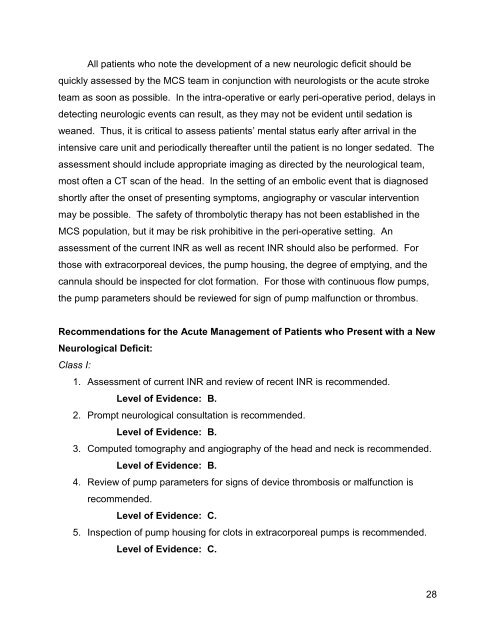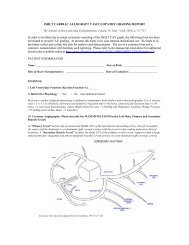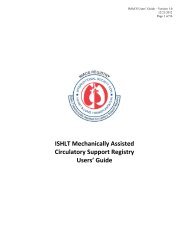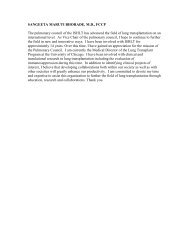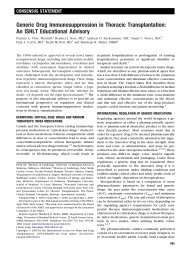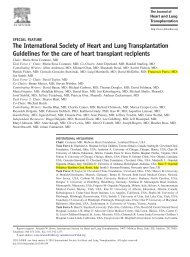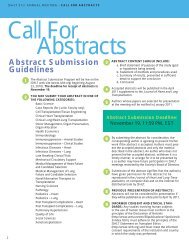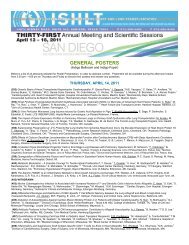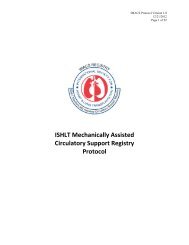Task Force 4: Inpatient Management of Patients with MCSD - The ...
Task Force 4: Inpatient Management of Patients with MCSD - The ...
Task Force 4: Inpatient Management of Patients with MCSD - The ...
Create successful ePaper yourself
Turn your PDF publications into a flip-book with our unique Google optimized e-Paper software.
All patients who note the development <strong>of</strong> a new neurologic deficit should be<br />
quickly assessed by the MCS team in conjunction <strong>with</strong> neurologists or the acute stroke<br />
team as soon as possible. In the intra-operative or early peri-operative period, delays in<br />
detecting neurologic events can result, as they may not be evident until sedation is<br />
weaned. Thus, it is critical to assess patients’ mental status early after arrival in the<br />
intensive care unit and periodically thereafter until the patient is no longer sedated. <strong>The</strong><br />
assessment should include appropriate imaging as directed by the neurological team,<br />
most <strong>of</strong>ten a CT scan <strong>of</strong> the head. In the setting <strong>of</strong> an embolic event that is diagnosed<br />
shortly after the onset <strong>of</strong> presenting symptoms, angiography or vascular intervention<br />
may be possible. <strong>The</strong> safety <strong>of</strong> thrombolytic therapy has not been established in the<br />
MCS population, but it may be risk prohibitive in the peri-operative setting. An<br />
assessment <strong>of</strong> the current INR as well as recent INR should also be performed. For<br />
those <strong>with</strong> extracorporeal devices, the pump housing, the degree <strong>of</strong> emptying, and the<br />
cannula should be inspected for clot formation. For those <strong>with</strong> continuous flow pumps,<br />
the pump parameters should be reviewed for sign <strong>of</strong> pump malfunction or thrombus.<br />
Recommendations for the Acute <strong>Management</strong> <strong>of</strong> <strong>Patients</strong> who Present <strong>with</strong> a New<br />
Neurological Deficit:<br />
Class I:<br />
1. Assessment <strong>of</strong> current INR and review <strong>of</strong> recent INR is recommended.<br />
Level <strong>of</strong> Evidence: B.<br />
2. Prompt neurological consultation is recommended.<br />
Level <strong>of</strong> Evidence: B.<br />
3. Computed tomography and angiography <strong>of</strong> the head and neck is recommended.<br />
Level <strong>of</strong> Evidence: B.<br />
4. Review <strong>of</strong> pump parameters for signs <strong>of</strong> device thrombosis or malfunction is<br />
recommended.<br />
Level <strong>of</strong> Evidence: C.<br />
5. Inspection <strong>of</strong> pump housing for clots in extracorporeal pumps is recommended.<br />
Level <strong>of</strong> Evidence: C.<br />
28


